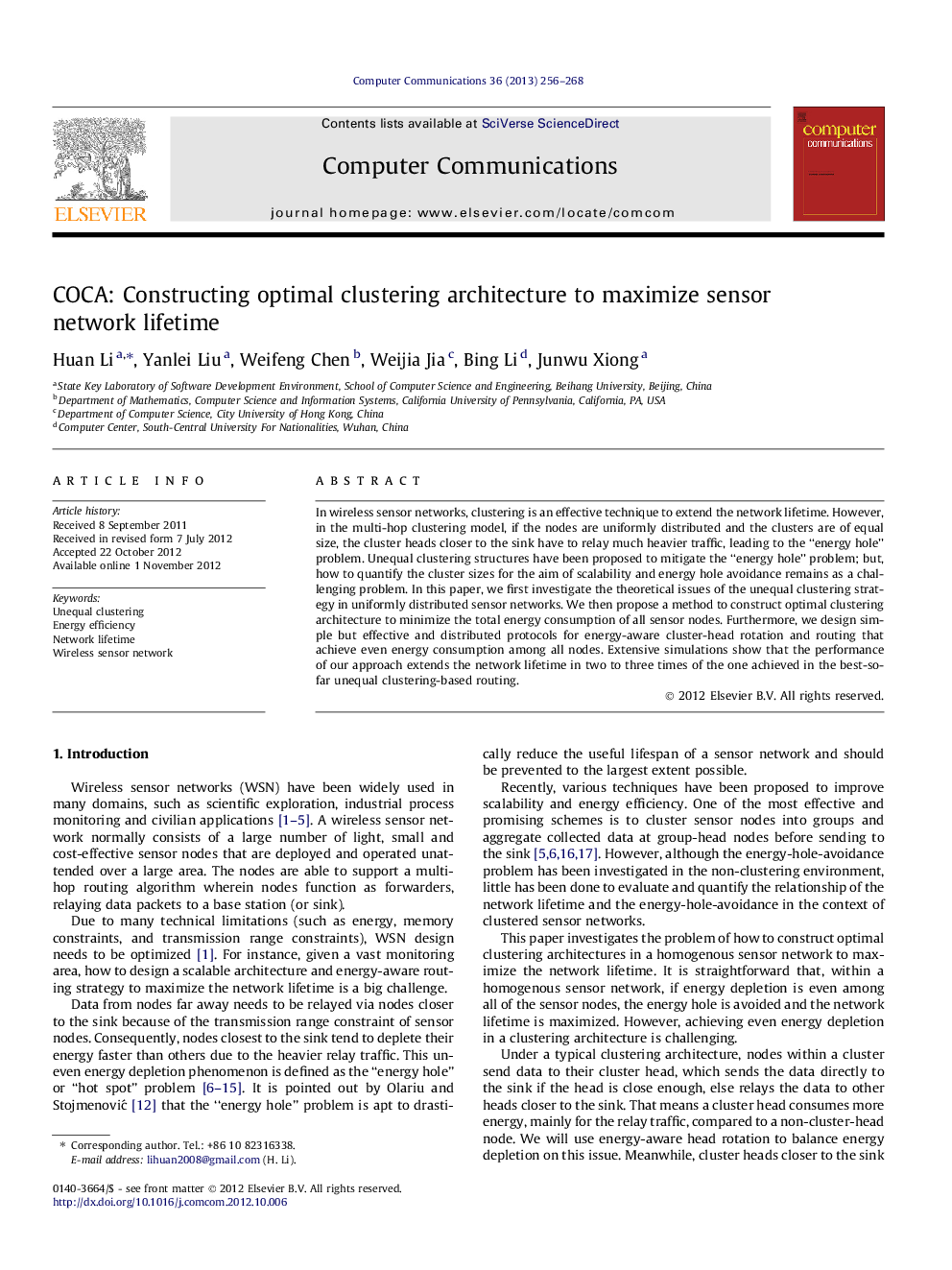| Article ID | Journal | Published Year | Pages | File Type |
|---|---|---|---|---|
| 448353 | Computer Communications | 2013 | 13 Pages |
In wireless sensor networks, clustering is an effective technique to extend the network lifetime. However, in the multi-hop clustering model, if the nodes are uniformly distributed and the clusters are of equal size, the cluster heads closer to the sink have to relay much heavier traffic, leading to the “energy hole” problem. Unequal clustering structures have been proposed to mitigate the “energy hole” problem; but, how to quantify the cluster sizes for the aim of scalability and energy hole avoidance remains as a challenging problem. In this paper, we first investigate the theoretical issues of the unequal clustering strategy in uniformly distributed sensor networks. We then propose a method to construct optimal clustering architecture to minimize the total energy consumption of all sensor nodes. Furthermore, we design simple but effective and distributed protocols for energy-aware cluster-head rotation and routing that achieve even energy consumption among all nodes. Extensive simulations show that the performance of our approach extends the network lifetime in two to three times of the one achieved in the best-so-far unequal clustering-based routing.
